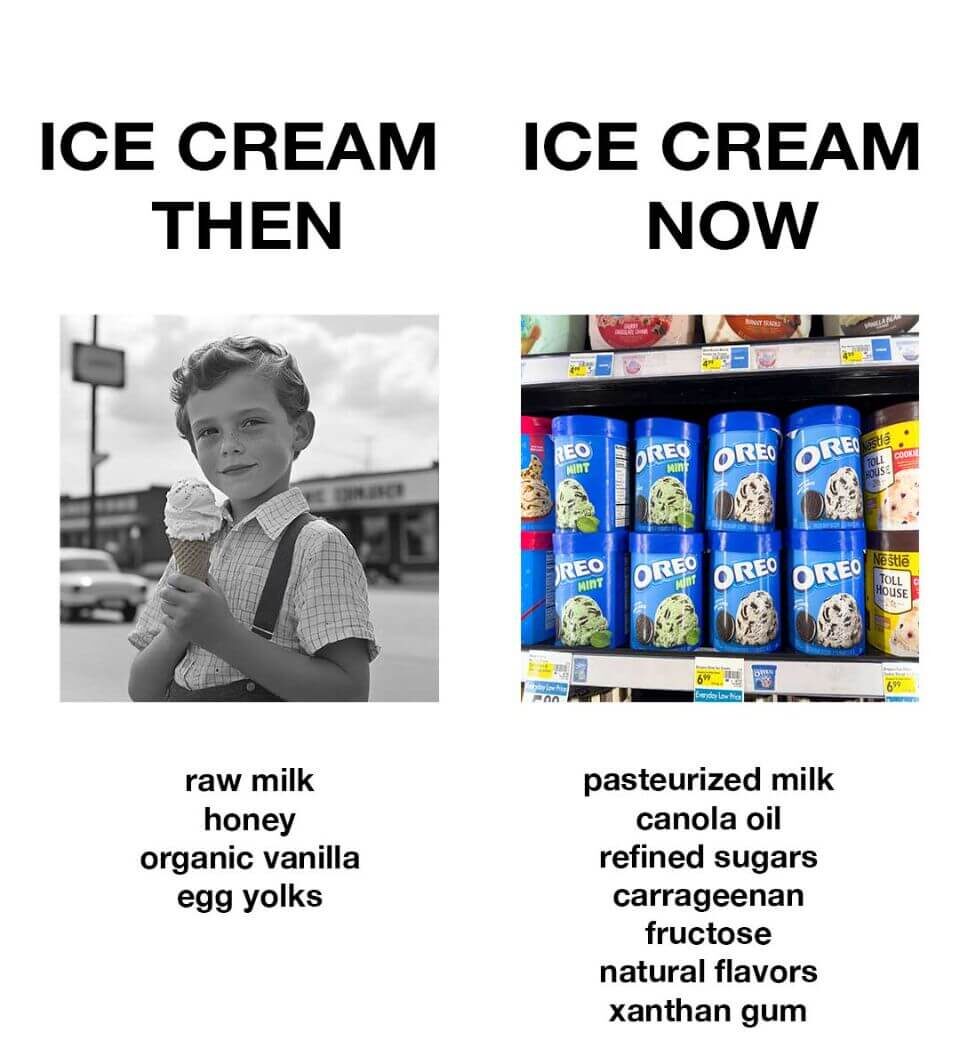Ice cream is a beloved dessert enjoyed by people of all ages, offering a rich, creamy texture and a variety of flavors. However, not all ice creams are made with health in mind. Many commercial brands include artificial additives, preservatives, and colorings that may negatively impact your well-being over time. Understanding the ingredients in your favorite frozen treats is crucial to making healthier choices.
Understanding Harmful Additives in Ice Cream
Manufacturers often add artificial colors, flavors, and preservatives to improve ice cream’s taste, appearance, and shelf life. Ingredients such as stabilizers (e.g., guar gum and carrageenan) help maintain a smooth texture, but some have been linked to potential health concerns. Certain additives may cause allergic reactions, digestive issues, or even long-term risks such as metabolic disorders or cancer. Reading ingredient labels carefully can help you make safer choices when selecting ice cream.
The Dangers of Red No. 3
Red No. 3, also known as Erythrosine, is a synthetic dye frequently used in strawberry or cherry-flavored ice creams. While it enhances visual appeal, studies have linked it to thyroid tumors in lab animals. The FDA banned its use in cosmetics and external drugs in 1990, yet it remains legal in food products. Given its potential risks, especially for children who consume it frequently, many experts recommend avoiding this artificial coloring.
Why Titanium Dioxide is Concerning
Titanium dioxide is a whitening agent used to make certain ice creams appear brighter, particularly in vanilla and coconut flavors. However, it has been classified as a “possible carcinogen” by the International Agency for Research on Cancer (IARC). Research suggests that excessive consumption could contribute to inflammation, oxidative stress, and even DNA damage. While it is still permitted in the U.S., countries like France have already banned its use in food, signaling growing concerns about its safety.
Other Unhealthy Additives to Watch For
In addition to Red No. 3 and titanium dioxide, several other additives commonly found in ice cream may pose health risks:
- High Fructose Corn Syrup (HFCS): Linked to obesity, diabetes, and liver problems.
- Artificial Flavors: May trigger allergic reactions or migraines in sensitive individuals.
- Polysorbate 80: A synthetic emulsifier that has been associated with gut inflammation and metabolic disruptions in animal studies.
- Carrageenan: A thickening agent derived from seaweed, potentially causing digestive discomfort or inflammation.
10 Ice Cream Brands to Avoid
Some ice cream brands rely heavily on artificial ingredients and additives that may be harmful over time. Below are ten brands that consumers may want to reconsider:
- Breyers – Once known for natural ingredients, some of its flavors now include Red No. 3, high fructose corn syrup, and artificial flavors, increasing health concerns.
- Blue Bell – Often contains titanium dioxide and polysorbate 80, along with artificial colorings and high-fat content.
- Turkey Hill – Uses artificial flavors and preservatives like potassium sorbate, which may irritate sensitive digestive systems.
- Baskin-Robbins – Includes synthetic dyes like Red No. 3 and Yellow 5, as well as carrageenan, which has been linked to digestive and allergy issues.
- Edy’s/Dreyer’s – Many of its products contain polysorbate 80, carrageenan, and high fructose corn syrup.
- Friendly’s – Frequently includes high fructose corn syrup and artificial sweeteners, which may contribute to metabolic health risks.
- Great Value (Walmart Brand) – Utilizes synthetic dyes, emulsifiers, and titanium dioxide to cut costs at the expense of quality.
- Häagen-Dazs (Certain Flavors) – While known for high-quality ingredients, some flavors still contain artificial colors and stabilizers.
- Kroger Deluxe – Uses titanium dioxide for whitening and artificial flavors, combined with high sugar levels that may negatively impact health.
- Perry’s Ice Cream – Often contains artificial ingredients and preservatives that could trigger reactions in sensitive individuals.
Healthier Ice Cream Alternatives
If you’re looking for a better way to enjoy ice cream without compromising your health, consider these options:
- Ben & Jerry’s (Organic Line): Made with natural ingredients, avoiding synthetic dyes and harmful additives.
- So Delicious (Non-Dairy): Uses coconut or almond milk bases and is free from titanium dioxide and artificial ingredients.
- Talenti Gelato: Features minimal ingredients and natural sweeteners like cane sugar instead of HFCS.
- Halo Top: A lower-sugar alternative without artificial colors, though it contains erythritol, which some people may be sensitive to.
- Homemade Ice Cream: Making your own ice cream allows full control over ingredients, using fresh fruit, natural sweeteners, and real cream.
When choosing ice cream, look for organic or non-dairy brands, which are less likely to contain harmful additives. Always read labels carefully—vague terms like “natural flavors” can sometimes conceal undesirable ingredients.
Conclusion: Choosing Wisely for Better Health
Enjoying ice cream doesn’t have to mean compromising your health. By learning about the risks of additives like Red No. 3, titanium dioxide, and synthetic emulsifiers, you can make informed choices and select brands that prioritize natural ingredients. Opting for healthier alternatives allows you to indulge in your favorite frozen treat while avoiding unnecessary risks. With a little awareness, you can savor ice cream without worrying about hidden dangers, making each scoop a truly sweet experience.
